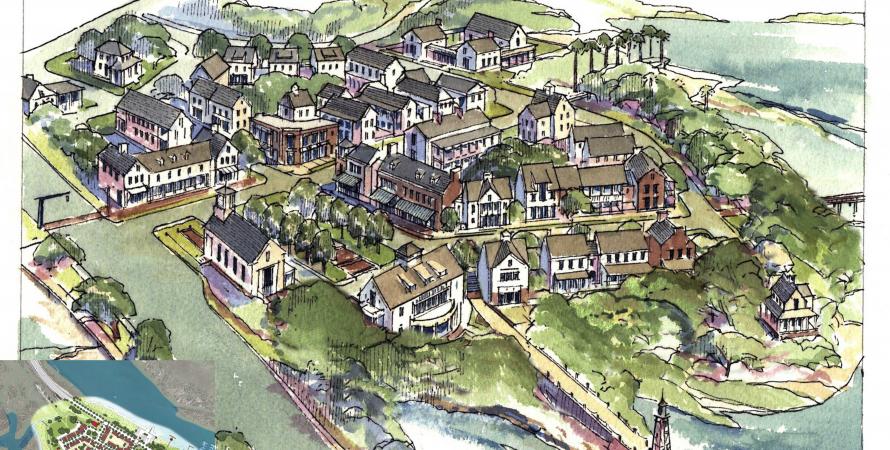-

A towering proposal for Portland’s Pearl
I don't often write about skyscrapers, but this proposal includes smart urban design moves.Portland’s Pearl District may get five million new square feet of development, including two towers—one 970 feet tall—in what is called the Broadway Corridor Plan. This project is interesting because it would extend the Portland tiny block pattern and the city's iconic “park blocks.” It also would...Read more -

State-of-the-art implementation in a historic town
A citywide comprehensive plan joins progressive vision with detailed implementation.The Beaufort Civic Master Plan continues to have an impact on the small coastal South Carolina municipality of about 13,000, as shown by the planning evolution of a key parcel. In February a developer submitted a mixed-use walkable plan for a 19-acre parcel across a bridge from downtown. The...Read more -

Public housing at the heart of neighborhood revival
In a half century, a neighborhood was cleared for public housing towers. Then the failing towers gave way to a new neighborhood.The Hawthorne neighborhood in Philadelphia has come back to life—catalyzed by Martin Luther King Plaza, the redevelopment of a former high-rise public housing project. Philadelphia Inquirer architecture critic Inga Saffron remembers Hawthorne as a "notorious, crime-ridden area," that is today a...Read more -

Transforming a ‘small town lost in time’
A suburb shows how to grow while building the core in a way that adds to the character of place.Until 2000, Woodstock, Georgia, was a small town with a population of about 10,000—but encroaching Atlanta sprawl threatened to engulf the community in cookie-cutter projects. The town needed a way to preserve and enhance its main street character. The 32-acre Woodstock Downtown has created an...Read more